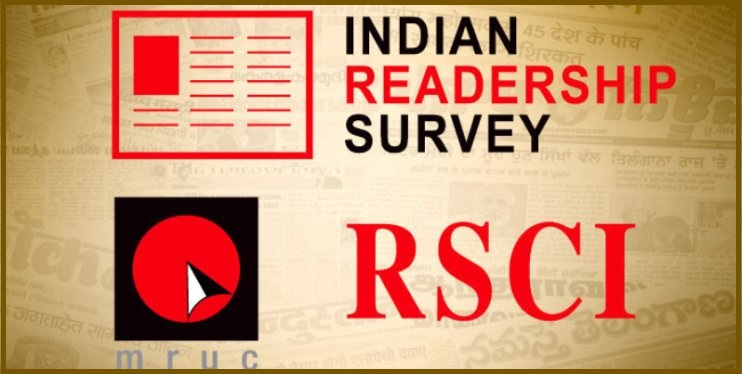“The IRS (Indian Readership Survey) not being stable is a matter of concern, but we need to move on. TV and digital dominate our mindspace and ad spends now,” says Ronita Mitra, senior manager, brand communication and insights, Vodafone India. Lloyd Mathias is head of marketing for printers and PCs at Hewlett-Packard India. His division spends more on print than any other media. “The lack of IRS has forced us to look closely at media that is better measured,” he says.
Earlier this year, when IRS 2014 was released, publishers began their usual fight over the numbers. The Times of India and others have been publishing large notices ridiculing the IRS – which is released by the Media Research Users Council, or MRUC, a body of publishers, advertisers and agencies. “Unless there are some fundamental checks, we don’t want to be part of it,” says Rahul Kansal, executive president, Bennett, Coleman and Company, which publishes The Times of India. Some publications, including The Hindu, Dainik Jagran and Dainik Bhaskar, have withdrawn from the survey. Others such as Malayala Manorama have refused to pay their subscription. They are demanding lower fees, tamper-proof data, better validation and a larger sample size. Last week the MRUC board accepted some demands. The sample size for IRS 2015 will go up to 300,000 from 235,000, and there will be a concurrent audit by one of the big five consulting firms, says Shashi Sinha, an MRUC board member. MRUC did not respond to e-mailed queries.
Whether a survey with a larger sample will work remains moot. It’s been more than two years since the last “acceptable” readership survey. Meanwhile advertisers, who bring in two-thirds of the industry’s Rs 26,300 crore revenues, have moved on, bringing down the growth of print ad revenues from about 8 per cent to 5-6 per cent in the last two quarters – way below that of television. The print industry, however, made record profits on the back of falling newsprint prices and rising circulation revenues.
Much of advertisers’ indifference and publishers’ rabble-rousing then raises the question: does readership matter to anyone? Maybe not. While the television industry has managed to raise Rs 150 crore to get a new rating system going, MRUC is struggling to get the Rs 15 crore or so it needs to conduct the next round of IRS. There are three reasons why some publishers would be happy to bury the IRS.
One, according to an MRUC board member, “a lot of media owners are fundamentally uncomfortable with measurement because the medium is in some decline”. The readership growth of English print had slowed down to less than 1 per cent in IRS 2012. Some top newspapers showed marginal declines. In the absence of data, advertisers use historical numbers because “readership has some amount of loyalty, a 5,000-10,000 rise or fall doesn’t make or break a publication,” says Sameer Satpathy, chief marketing officer, Marico. This means that the publications in the topmost rungs in IRS 2012 remain where they are. This ranking is very dear to publishers because of its perceived impact on ad rates. That, says Paritosh Joshi, chairman of MRUC’s technical committee, is a limited use of the IRS. “It is not just about helping someone increase or decrease prices. Suppose I say that in households that comprise people less than 20 years of age, there will be a likely drop in print readership. Has anyone done a regression analysis to see which parts of India this hypothesis bears out for and which parts it doesn’t?” Joshi asks.
Two, 50 to 65 per cent of the spend in large regional language papers comes from local or regional advertisers. Their measure is the response to an ad, not readership. The national advertisers who want readership numbers are already moving to TV or digital, further reducing the importance of readership. Also, the IRS sample is skewed towards the big metros. This makes language papers, most of which are growing fast in small towns, unhappy with the readership picture.
Three, the new IRS is also about a tussle between big and small publishers and between publishers and advertisers. Till the process change happened in 2012, many of the larger publishers drove the research agenda. They don’t now. “Many large publishers don’t attend technical committee meetings and don’t understand research. There is a lot of ego and politicking between the big and small publishers,” says an insider. For a quick contrast, MRUC insiders point to the Broadcast Audience Council Research, or BARC, formed to rejuvenate television audience measurement. “BARC has done a great job of constituency management. MRUC hasn’t,” says a person familiar with both. Jayant Mathew, director, Malayala Manorama, suggests, “We need better communication among the principal stakeholders and a robust research principle that is signed by everybody. The research process needs to be explained before, not after the data is out.”
Sandeep Tarkas is president (customer strategy) of the Future Group, a heavy print advertiser and an MRUC board member. He says, “In the long term, the lack of readership data will destroy the (print) media.” Most publishers agree. The question is, do they want to do anything about it?
History of IRS…
MRUC was set up in 1994 to shake off the dominance of large papers in the erstwhile National Readership Survey. In response to complaints about the IRS, MRUC, in 2009, joined hands with the Audit Bureau of Circulations to form the Readership Studies Council of India. In 2012, it gave Nielsen India the mandate to carry out the survey.
When the revamped IRS was released in January 2014, publishers were furious. Total readership was shown to have gone down from 350 million to 281 million and many publications were displaced in the rankings (the figure was subsequently revised to 301 million). There also were anomalies in the data. The Indian Newspaper Society denounced the survey. Dainik Bhaskar got a stay order on it. However, a 15-member revalidation committee that included The Hindu and Malayala Manorama commissioned an audit that largely cleared the process and data. Using the 2013 data with one round of fieldwork in 2014, MRUC released IRS 2014 earlier this year. This set publishers off again.
Many publications such as The Times of India were active on the revalidation committee. So, why the questions now? Rahul Kansal, executive president, Bennett, Coleman and Company, publisher of the paper, reckons the data is “very tamperable”. To which Sandeep Tarkas, MRUC board member, replies, “I don’t agree with the tampering charge because when we changed the process everyone agreed to it. If you are happy with the process, then the outcome has to be accepted.” An insider maintains that where MRUC went wrong was in using a year-old fieldwork. Another member asks, “Publishers are complaining about corruption of data, but who is corrupting it? Why can’t they rein in their own guys?”
Source : BS

















